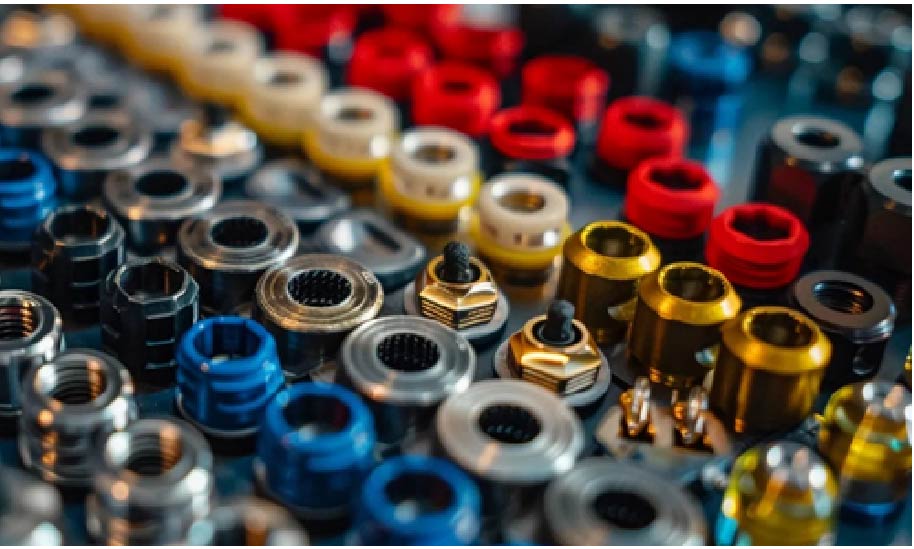In a world where machinery and equipment are essential to industrial processes, the small details, like caps and plugs, play a crucial role in maintaining system integrity. These components are critical in protecting equipment from contaminants, damage during shipping, or environmental factors. Whether you’re in manufacturing, aerospace, maintenance, or automotive industries, understanding the right type of cap and plug for every scenario is vital. Below, you’ll find a comprehensive guide that caters to everything from basic functions to specialized applications. Keep reading to ensure that you choose the most effective solutions for your needs.
Understanding the Basics of Caps and Plugs and Their Functions

Caps and plugs, though small, play a vital role in protecting equipment from dirt, moisture, and other contaminants. Caps typically shield external surfaces like pipe ends, while plugs fit inside openings to prevent leakage or contamination. Their use helps avoid machinery wear, operational inefficiencies, and costly downtime.
Beyond protection, caps and plugs support safe storage, transport, and optimal system performance. They are also used for color-coding and identification, helping distinguish components like connectors or fluid lines and streamlining assembly processes. Choosing the right caps and plugs is an important part of system design and maintenance, ensuring both functional integrity and operational clarity.
Material Considerations for Caps and Plugs in Various Applications
Material composition plays a crucial role when selecting caps and plugs, with choices guided by factors like durability, flexibility, chemical resistance, and temperature tolerance. Plastic and rubber are widely used for their versatility and affordability, while metal options are favored in high-strength, high-heat environments such as industrial piping or automotive systems.
Silicone and rubber offer excellent flexibility, making them ideal for variable dimensions or sensitive components. For applications involving chemical exposure, materials like Teflon and Viton provide strong resistance to corrosive substances, essential in pharmaceutical or chemical processing industries. Sustainable options, including biodegradable and recyclable materials, are also gaining attention as environmental regulations and standards continue to influence material selection.
Customization and Sizing: Ensuring a Perfect Fit for Maximum Protection
A proper fit is essential for caps and plugs to function effectively. Too loose and there’s a risk of contamination; too tight and damage may occur. Standard sizes often meet common needs, but for unique applications, custom solutions are crucial. Companies like Caplugs offer a wide range of sizes and custom options to ensure an ideal fit for any industry.
Understanding the correct measurement system, whether metric or imperial, is key when sizing caps and plugs. Factors like thread size, diameter, and length all affect performance. With technologies like 3D printing, manufacturers can quickly create accurate prototypes, making it easier to meet specialized requirements with precision.
Industry-Specific Applications and Specialized Solutions for Caps and Plugs

Caps and plugs are specialized components designed to meet the unique needs of various industries. In aerospace, they must endure extreme temperatures and pressures while complying with strict safety standards. Electronics rely on caps and plugs with antistatic properties to shield sensitive parts during assembly and transport.
In the medical field, materials must support sterilization for sanitation and safety. Automotive applications use them to protect threads, ports, and connectors from debris and damage. The construction industry often requires large, durable versions for piping and machinery. Industries typically work with manufacturers to create custom solutions that balance performance, cost, and functionality for their specific environments and technical demands.
Best Practices for Installation and Maintenance of Caps and Plugs to Ensure Longevity
Proper installation of caps and plugs is as important as selecting the right type, as incorrect installation can lead to damage or contamination. Following manufacturer guidelines, including proper tool use and application force, ensures effective performance. Regular inspections and maintenance are necessary, especially in harsh environments, to detect wear and replace degraded parts before failure.
Keeping a stock of spare components allows for timely replacements. Environmental conditions, such as high vibration or extreme temperatures, should dictate how often checks are performed. Training staff on proper handling and installation helps reduce human error, extending the lifespan of both the protective components and the equipment they safeguard.
Overall, the appropriate selection, installation, and maintenance of caps and plugs are fundamental to the protection and performance of industrial systems. By giving due attention to these often-overlooked components, businesses can enhance operational efficiency, safety, and equipment longevity.













